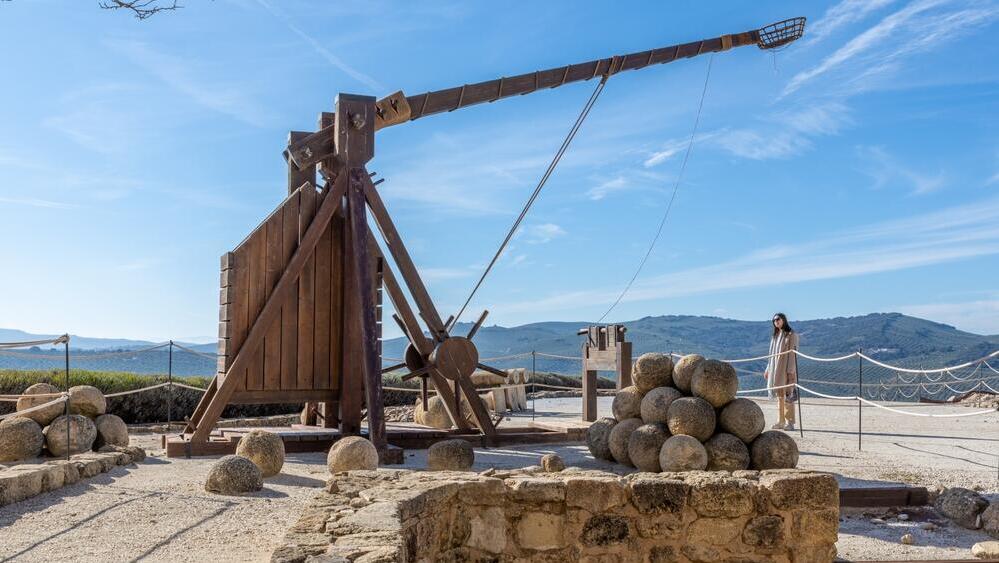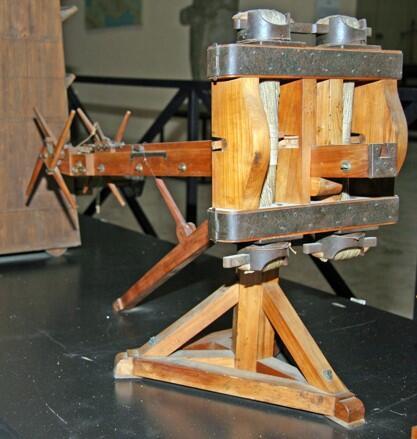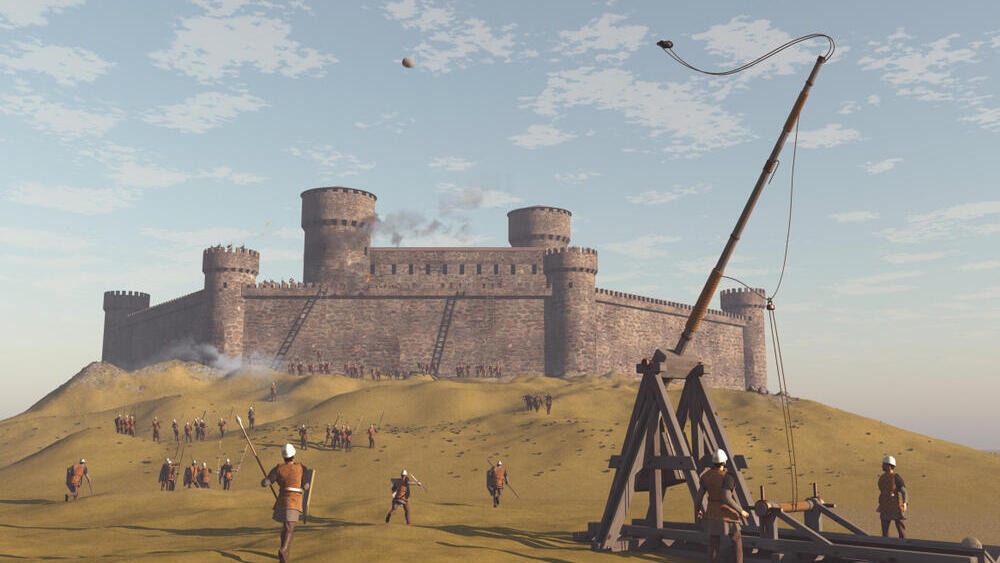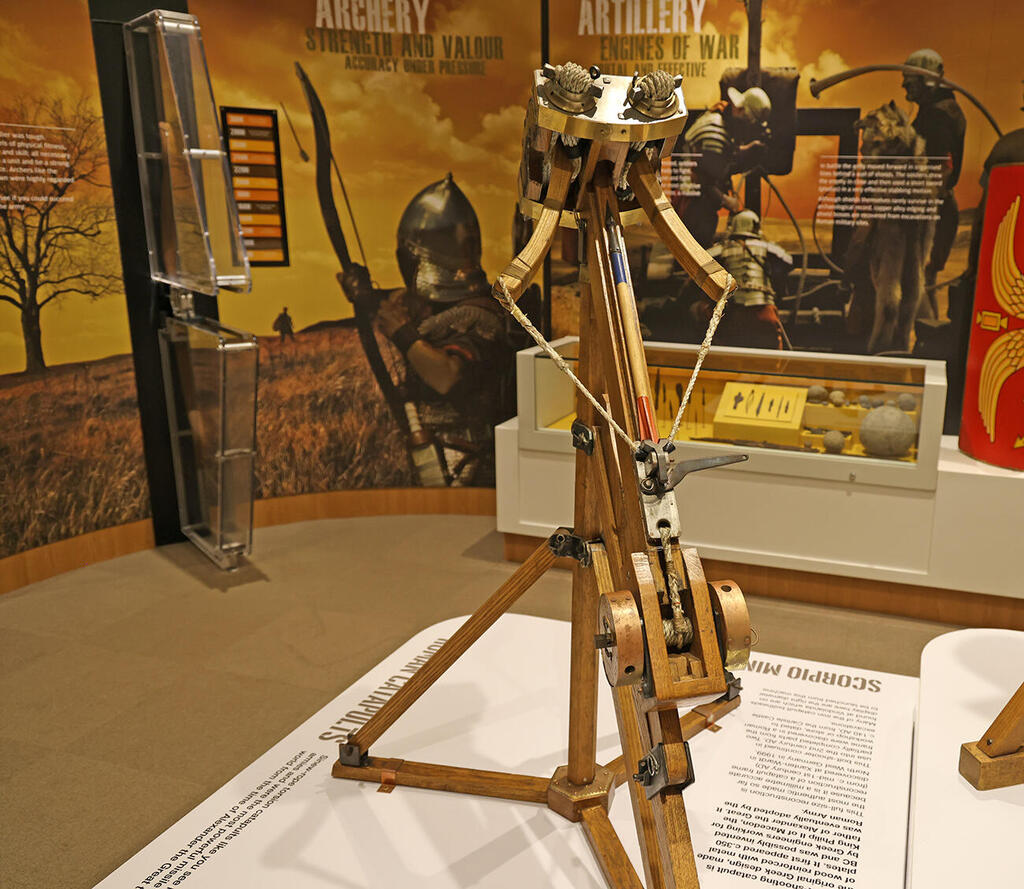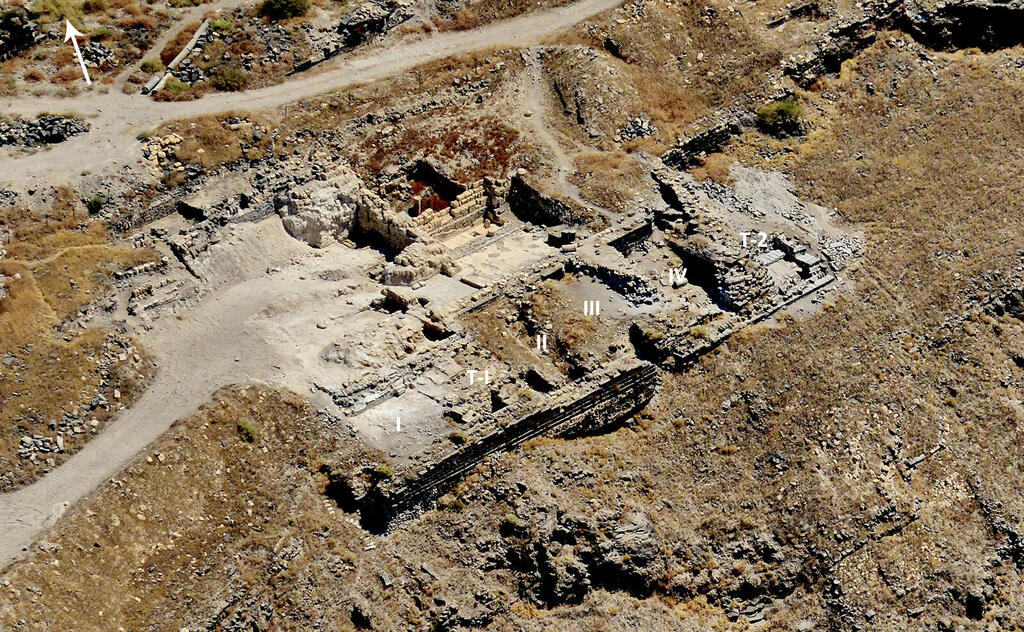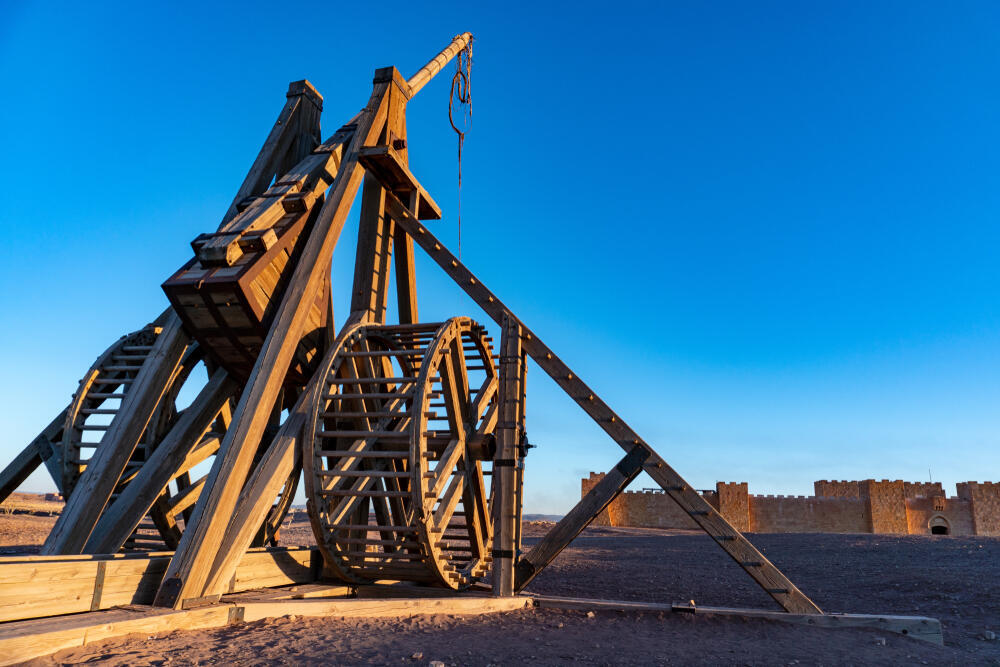Getting your Trinity Audio player ready...
Footage of IDF reservists on the northern border using an ancient siege weapon to launch fireballs at Hezbollah's terror infrastructure in Lebanon, went insanely viral last week. However, the use of such weapons dates back thousands of years.
To trace the history of the first catapult, one must return to the port city of Syracuse in southeastern Sicily in 399 BCE. At that time, Dionysius I, the tyrant of Syracuse, embarked on a military campaign across the island. He conquered several cities in Sicily and southern Italy, resisted the expansion of Carthaginian influence on the island and made Syracuse the strongest and most prosperous Greek colony in the Western Mediterranean.
He achieved this by investing heavily in the development of siege weapons, encouraging master craftsmen to create two types of machines to combat the Carthaginians' sturdy fortifications. "We have a unique instance in which we can pinpoint an exact moment in time and say - this is where the revolution began," says Dr. Michael Eisenberg of the University of Haifa’s Zinman Institute of Archaeology.
Under Dionysius' oversight, two revolutionary siege weapons were developed: a mobile wooden siege tower on wheels, reaching several stories high, and a powerful catapult. The siege tower, pushed by dozens to hundreds of warriors, provided height and protection, allowing attackers to breach city walls. Warriors could cross onto the walls using dropped bridges, shoot arrows through slits and observe from an advantageous height, targeting defenders and preventing effective counterattacks, ultimately leading to the breaching and demolition of walls.
The second weapon was the catapult, derived from the Greek term meaning "to hurl down," a ballistic device used to shoot various projectiles. The catapult evolved and improved over the years. In 399 BCE, the first catapult, known as a "belly-bow" due to its cocking mechanism, was built. This machine drew an arrow by resting its rear against the operator's belly and its front against the ground.
The catapult consisted of two parts: a bow and a central rod integrated into it, providing an effective firing range of 220 meters, 40 meters more than the composite bow. The composite bow, invented after the simple bow, was used by mounted archers of the Eurasian steppe peoples who invaded Europe, the Middle East and China.
Within a few years, Mediterranean powers adopted the new war machine and developed it into two types: the oxibeles for launching spears and the ballista for launching stone boulders. These devices, known collectively as ballistae (from the Greek word "ballein," meaning to throw), were further categorized into larger weapons called petrobolos (rock launchers) and smaller ones called lithobolos (stone launchers).
"These machines were mounted on a large wooden frame, with their lengths reaching over 8 meters, depending on the projectile size," explained Dr. Eisenberg. "They were similar in concept to the simple belly-bow but more powerful: two horizontal arms were stretched by a winch until the trigger was released, with an effective firing range of about 300 meters."
By the mid-4th century BCE, the catapult was enhanced for more power. "These improvements included two bronze drums, one for each arm, containing bundles of animal sinews or horse tail hair," Dr. Eisenberg noted.
"The twisting of the sinews in the drum created stored energy, increasing as the material in the drum grew. Typically, the aim was indirect, with a shooting range between 200 and 400 meters. In the absence of sufficient animal sinews or horse tail hair, women contributed their hair to the war effort."
Under the reign of Philip II, King of Macedon from 359-336 BCE, siege machines were significantly refined and later employed by his son, Alexander the Great, during his conquests in the Middle East and Persia. Alexander is recognized for having some of the most advanced siege weapons of his time, both on land and at sea.
Over the years, the Romans adopted these siege technologies. "When the Romans began to expand throughout the Mediterranean and beyond, they incorporated Greek weaponry into their arsenal. This adoption sometimes led to confusion with the nomenclature,” Dr. Eisenberg explained.
“The Romans referred to stone-launching devices as catapults and spear-shooting machines as ballistae, each with specific names such as the smaller spear launcher called the Scorpio. They refined these machines, standardizing their use across every cohort, with designs featuring two arms and two drums for increased power," he added.
Dr. Eisenberg noted that a new siege weapon called an onager appeared on the battlefield at the end of the Roman period in the 4th century CE. This machine had a single arm with a sling at the end to launch a stone ball.
"From this point into the Byzantine period, there was a regression in the development of war machines. By the 7th century, a weapon called the mangonel emerged. Derived from the Latin 'mangano,' meaning 'engine of war,' it was used by the Chinese and operated by a lever and long arm, requiring dozens to hundreds of soldiers," he said.
The evolution of siege warfare led to corresponding changes in fortifications starting from the 4th century BCE. Each machine was designed according to the type, weight, and projectile length it was intended to use, sometimes with the assistance of notable figures like Archimedes.
For instance, boulders weighing 2.3-24 kg (5-53 lbs)(with some exceptional ones up to 33 kg or 73 lbs) were often marked with numerals to avoid confusion during their transfer to various siege engines. Many such marked boulders have been discovered at Tel Dor and in fortresses and settlements besieged during events like the Great Jewish Revolt against the Romans in the Galilee and Jerusalem in the first century BCE.
8 View gallery


Dr. Alexander Yarmolin with 13 kg boulder found in Sussita
(Photo: Dr. Michael Eisenberg)
A unique siege platform, or bastion, designed for the defenders' missile weaponry was discovered in Sussita, east of the Sea of Galilee. Likely from the time of the Great Jewish Revolt (67 CE), it included basalt boulders weighing 13 kg, and limestone boulders fired by besieging forces were found nearby.
"Siege weapons were built with precise measurements, requiring extensive knowledge and skill. Warriors transported these machines in disassembled states and assembled them on-site near their military targets. The Roman army excelled in logistics and maintained tight siege rings. Each Roman legion had a well-organized structure, including the 'legion's artillery officer,'" Dr. Eisenberg explained.
In the 12th century CE, a new war machine called the trebuchet was invented in the Mediterranean region. This device, an evolution of the mangonel, featured a large arm with a wooden box at the end filled with stones, serving as a counterweight pendulum. Before the opposite end of the lever was another axis, and at its end, a sling with a heavy stone increased the throw speed, allowing projectiles to travel 200 to 300 meters.
This advancement enabled the launching of ammunition weighing hundreds of kilograms, necessitating changes to fortifications, which struggled to withstand such heavy attacks. However, the trebuchet's slow loading time meant that mangonels continued to be used alongside it for efficiency.
With the advent of gunpowder in the 16th century, the use of these ancient machines declined. Nevertheless, as demonstrated recently near the Lebanon border, these historic weapons can still be applied in modern times.




